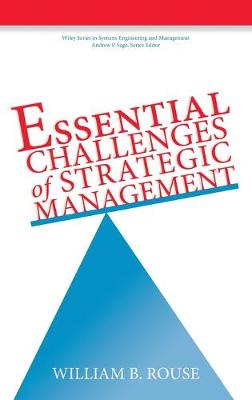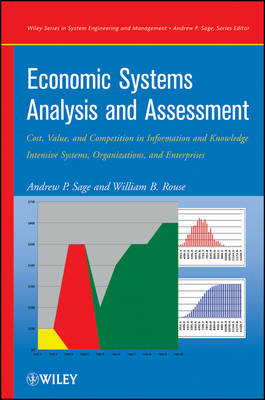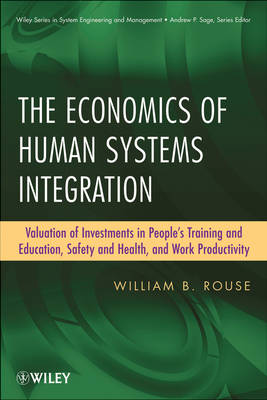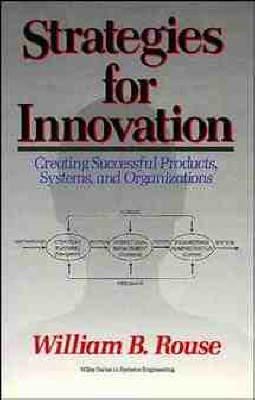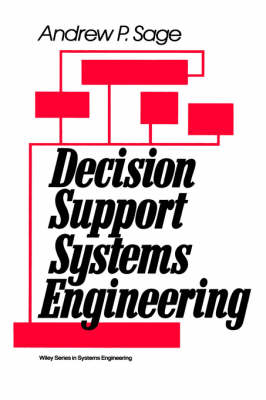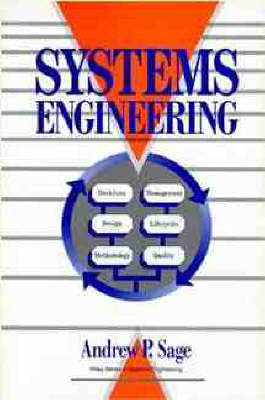Wiley Series in Systems Engineering and Management
6 primary works • 12 total works
Book 16
Through the use of real-world examples and useful graphs, readers will learn to: Choose the most appropriate methods and tools for a given project Apply issue formulation methods to assure that the right problem has been identified Work with formal analysis methods to assure that the problem is solved correctly Apply issue interpretation methods to insure that decisions reflect human values and technological realities, and thereby make interpretation work for them in the decision-making process Develop an appreciation for the engineering and troubleshooting of large systems
Book 21
"Bill Rouse provides helpful insight to make any business, and in particular any high- tech business, perform better."-Dennis A. Roberson, Senior Vice President & Chief Technology Officer Motorola
"A well-organized, easy-to-understand bible for all strategic managers and leaders."-Dr. Stanley G. Rosen, Director of Strategic Planning Boeing Satellite Systems
"A must-read for managers seeking clarity and focus as they lead organizations through chaotic times."-William C. Kessler, Vice President for Enterprise Productivity Lockheed Martin Aeronautics Company
From TQM to business process reengineering to knowledge management, the last several decades have witnessed the rise and fall of many a management panacea. As a consequence, a general feeling is now brewing among disillusioned managers worldwide that perhaps the time has come to abandon the impractical quest for an all-encompassing solution to management problems and get back to basics. Essential Challenges of Strategic Management takes a major step towards realizing that goal.
Drawing upon the experiences of literally thousands of executives and senior managers working in all industry sectors, as well as government and nonprofit organizations, this book zeros in on the fundamental challenges faced by every senior manager, regardless of the business he or she is in, and describes a range of approaches to those challenges developed by women and men working at many of today's leading organizations.
Designed as a ready source of inspiration and ideas for busy executives and senior managers, Essential Challenges of Strategic Management consists of concise, independent chapters, each dedicated to a different strategic challenge. Throughout, celebrated entrepreneur, Fortune 500 consultant, author and educator, William Rouse uses fascinating and instructive case studies and vignettes to illustrate the best practices in strategic management and vividly describes various approaches, tools, and techniques. Additionally, he provides clear-cut guidelines for selecting and implementing the solutions most likely to succeed in a given situation.
Book 44
With contributions from leaders in systems and organizational modeling, behavioral and social sciences, computing and visualization, and gaming and entertainment, Organizational Simulation both articulates the grand vision of immersive environments and shows, in detail, how to realize it. This book offers unparalleled insight into the cutting edge of the field, since it was written by those who actually researched, designed, developed, deployed, marketed, sold, and critiqued today's best organizational simulations.
The coverage is divided into four sections:
* Introduction outlines the need for organizational simulation to support strategic thinking, design of unprecedented systems, and organizational learning, including the functionality and technology required to enable this support
* Behaviors covers the state of knowledge of individual, group, and team behaviors and performance, how performance can best be supported, how performance is affected by national differences, and how organizational performance can best be measured
* Modeling describes the latest approaches to modeling and simulating people, groups, teams, and organizations, as well as narrative contexts and organizational environments within which these entities act, drawing from a rich set of modeling methods and tools
* Simulations and Games illustrates a wide range of fielded simulations, games, and entertainment, including the methods and tools employed for designing, developing, deploying, and evaluating these systems, as well as the social implications for the associated communities that have emerged
Addressing all levels of organizational simulation architecture with theories and applications, and enabling technologies for each, Organizational Simulation offers students and professionals the premier reference and practical toolbox for this dynamic field.
Book 51
Book 54
Economic Systems Analysis and Assessment
by Andrew P. Sage and William B. Rouse
This important volume fills the need for a textbook on the fundamentals of economic systems analysis and assessment, illustrating their vital role in systems engineering and systems management. Providing extensive coverage on key topics, it assumes no prior background in mathematics or economics in order to comprehend the material.
The book is comprised of five major parts:
-
Microeconomics: a concise overview that covers production and the theory of the firm; theory of the consumer; market equilibria and market imperfections; and normative or welfare economics, including imperfect competition effects and consumer and producer surplus
-
Program Management Economics: discusses economic valuation of programs and projects, including investment rates of return; cost-benefit and cost-effectiveness analysis; earned value management; cost structures and estimation of program costs and schedules; strategic and tactical pricing issues; and capital investment and options
-
Cost Estimation: reviews cost-estimation technologies involving precedented and unprecedented development, commercial-off-the-shelf (COTS) software, software reuse, application generators, and fourth-generation languages
-
Strategic Investments in an Uncertain World: addresses alternative methods for valuation of firms including Stern Stewart's EVA, Holt's CFROI, and various competing methodologies
-
Contemporary Perspectives: covers ongoing extensions to theory and practice that enable satisfactory treatment of the increasing returns to scale, network effects, and path-dependent issues generally associated with contemporary ultra-large-scale telecommunications and information networks
Also discussed in this comprehensive text are normative or welfare economics and behavioral economics; COCOMO I and II and COSYSMO as examples of a cost model; and options-based valuation models and valuation of information technology intensive enterprises.
Economic Systems Analysis and Assessment serves as an ideal textbook for senior undergraduate and first-year graduate courses in economic systems analysis and assessment, as well as a valuable reference for engineers and managers involved with information technology intensive systems, professional economists, cost analysts, investment evaluators, and systems engineers.
Book 72
* Evaluating users' needs and preferences
* Concept and market evaluation of alternative ways to satisfythese demands
* Detailed design and engineering evaluation of products andsystems
* Fielding and ongoing in-use evaluation
A wide variety of methods and tools is discussed within thismethodological framework. Applications are illustrated with casestudies of actual applications in a variety of industries. Thisbook makes human-centered design very concrete and readilyapplicable to practical and realistically complex design problems."How to" guidance is provided in the form of case histories andalmost 100 figures and tables, as well as principles and guidelinesfor implementing the design "toolbox" outlined throughout the book.1991 (0471-52483-2) 287 pp. Strategies for Innovation CreatingSuccessful Products, Systems, and Organizations William B. RouseConcentrating on technology-based businesses, Strategies forInnovation presents a comprehensive methodology for businessplanning and market development. The author demonstrates theseprinciples with actual plans successfully implemented in his owninnovative software company. In addition, he has included a wealthof real-life examples, case studies and vignettes, with which heexplores marketing strategies, business techniques, and planningmethodologies that have worked for companies ranging fromtechnology-based Fortune 500 companies to small new venturestart-ups. The book includes more than 100 figures and tables thatprovide easy access to critical information, and an extensivebibliography. This highly practical guide is an important resourcefor executives in technology-based businesses, as well as systemsengineers and engineering managers. It is also an excellent textfor MBA candidates and graduate students and teachers in areasrelated to the design and management of technology-basedenterprises. 1992 (0-471-55904-0) 272 pp.

